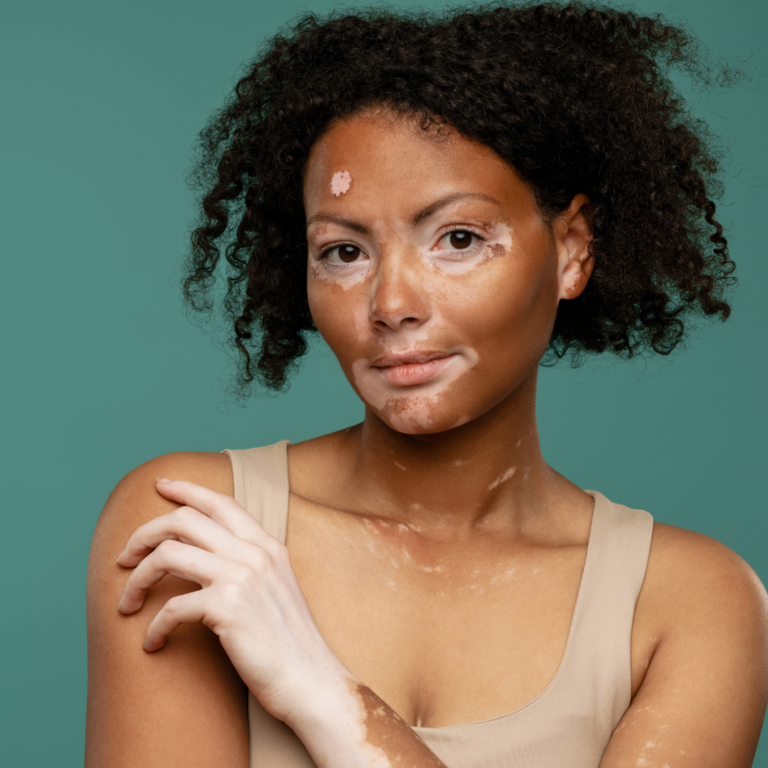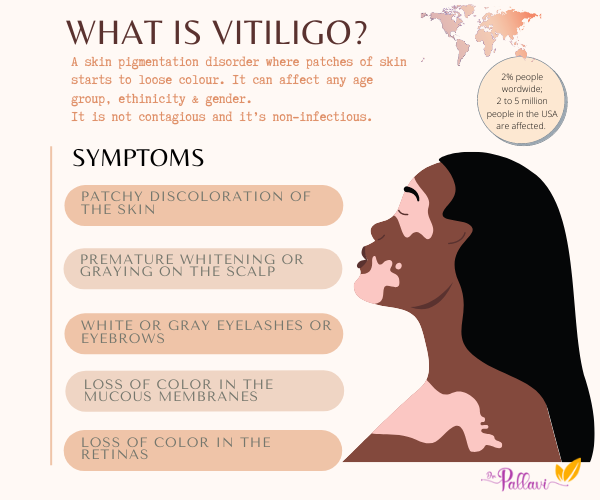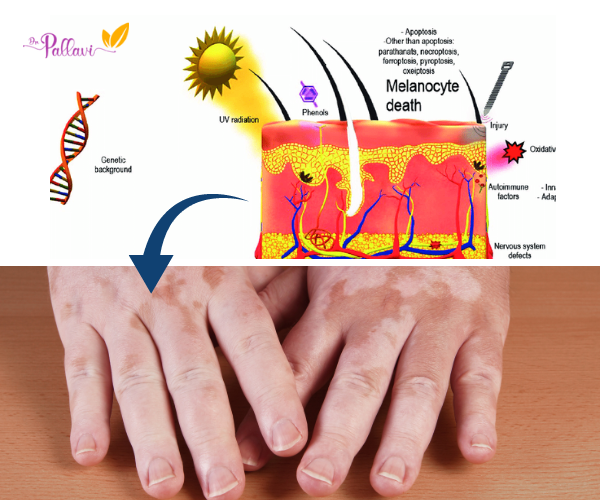
VITILIGO, also called Leucoderma is a chronic skin problem characterized by white or gray patches (depigmentation) in the skin. White patches affect different areas of the body including face, arms and hands, trunk, and legs.
Typically both sides of the body are affected by Vitiligo, with patches often beginning on skin areas more exposed to the sun.
It is more noticeable in people with dark skin. Vitiligo may result in stress & embarrassment, and those affected are sometimes stigmatized.
It can be completely disfiguring if not treated. The current treatment involves the use of synthetic steroids that have serious side effects like thinning of skin and in extreme conditions, skin cancer can be one of the symptoms of steroid abuse.
Vitiligo is not contagious & not infectious condition, and there are no known risks to children born to parents with the condition.
Many people with Vitiligo have a family history of the disease, although it is not fully understood whether Vitiligo is genetic or inherited.
70 million people across the globe have Vitiligo. 2% of people word-wide; with 2 to 5 million people in the USA alone are affected.
The exact cause of Vitiligo is unidentified. It is believed to be due to genetic susceptibility triggered by an environmental factor such that an autoimmune disease occurs. This results in the destruction of the Melanocytes, the skin pigment cells.

Symptoms

Depigmentation of skin; pale patchy areas of depigmented skin tend to occur on the extremities.
Some people may experience itching before a new patch occurs. The patches are initially small but often grow and change shape.
Etiopathology:
The exact reason for the development of Vitiligo is not entirely known.
There are top 4 hypotheses:

1: The Autoimmune hypothesis – the co-occurrence of other autoimmune conditions like thyroid, diabetes, lupus erythematosus, myasthenia gravis, rheumatoid arthritis, pernicious anemia, etc.
2: Neural Hypothesis – Accumulation of a neurochemical substance decreases melanin production. Melanocytes could be damaged by a toxin released by nerve endings or that they produced.
3: Autocytotoxic metabolites of melanocytes in the melanin synthesis
4: Deficiency in the unidentified melanocytes growth factors.
The neural hypothesis is thought to be involved in segmental Vitiligo, whereas the autoimmune theory is believed to be involved in generalized Vitiligo.
How can Homeopathy help in treating Vitiligo?

Homeopathy is a form of treatment based on the principle of “like cures like,” in which a substance that causes symptoms in a healthy person is used in small amounts to treat similar symptoms in a person who is sick.
If you or your loved one is dealing with Vitiligo, and would like to know about How can I help you , book an online consultation now.
First to know about great wellness tips from Dr. Pallavi Vasisht? Subscribe now !!!